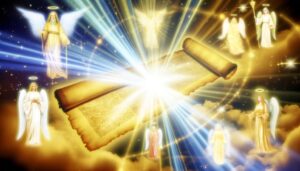Meaning of the Word Selah in Bible: Pause and Reflection
In biblical scholarship, the term ‘Selah‘ appears frequently in the Psalms and Habakkuk, functioning primarily as a liturgical or musical marker. Historically, it is believed to direct worshippers to pause and reflect on the preceding verses, enhancing spiritual engagement through contemplation.
Theological interpretations suggest it highlights moments for deeper meditation on divine messages, emphasizing the weight of God’s revelations. Additionally, ‘Selah’ may indicate a musical interlude or shift, integral to ancient Hebrew worship practices.
Understanding its precise meaning remains challenging, yet its role in fostering reflective worship is undisputed. Exploring its occurrences further reveals its profound significance in biblical liturgy.

Selah Meaning in the Bible: Understanding Its Significance in Scripture
| Aspect | Explanation | Key Bible Reference |
|---|---|---|
| Definition | The exact meaning is uncertain, but it is believed to mean “pause,” “reflect,” or “lift up.” | Psalm 3:4 – “I cried to the Lord with my voice, and He heard me from His holy hill. Selah.“ |
| Musical Term | Some scholars suggest it was a musical or liturgical instruction in Hebrew poetry. | Psalm 66:4 – “All the earth worships you and sings praises to you; they sing praises to your name. Selah.“ |
| Call to Reflection | Encourages the reader to pause and meditate on the preceding verse. | Psalm 46:10 – “Be still, and know that I am God… Selah.“ |
| Emphasis on Worship | Highlights moments of deep worship and praise in the Psalms. | Habakkuk 3:3 – “His glory covered the heavens, and the earth was full of His praise. Selah.“ |
| Possible Etymology | Some believe it comes from the Hebrew root meaning “to weigh” or “to measure.” | Psalm 62:8 – “Trust in Him at all times, you people; pour out your hearts before Him. Selah.“ |
Historical Context of Selah

The term ‘Selah,’ extensively found in the Hebrew Bible, particularly in the Psalms and the Book of Habakkuk, has intrigued scholars and theologians, leading to diverse interpretations rooted in its historical and liturgical context.
Historically, ‘Selah’ is believed to be a liturgical or musical marker used by ancient Hebrew worshippers. Its exact etymology remains uncertain, yet it is often associated with instructions for musical or poetic interlude, possibly indicating a pause or a moment for reflection within the psalm’s recitation.
Theological insights suggest that ‘Selah’ served to emphasize the preceding passage, inviting the congregation to ponder its spiritual significance.
This multifaceted term underscores the intricate interplay between worship, music, and divine contemplation in ancient Hebrew tradition.
Occurrences in Psalms
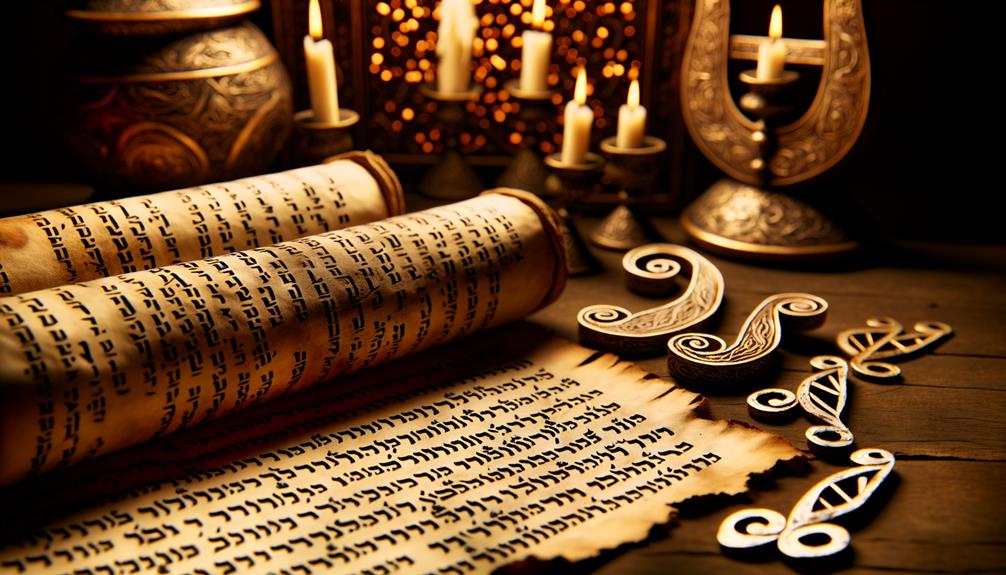
In examining the occurrences of ‘Selah‘ within the Psalms, one finds it appearing seventy-one times, each instance offering a moment for reflection and deeper engagement with the sacred text.
This term is often situated at the end of verses or stanzas, inviting readers to pause and meditate on the preceding words.
The historical use of ‘Selah’ in musical or liturgical contexts suggests it may have served as a cue for a musical interlude or a moment of silence, enhancing the worship experience.
Theologically, ‘Selah’ functions as a prompt to internalize the divine message, allowing the weighted significance of God’s words to resonate within the hearts and minds of the faithful.
Selah in Habakkuk

Although ‘Selah‘ appears mainly in the Psalms, its inclusion in the Book of Habakkuk provides a unique perspective on its liturgical and theological function within prophetic literature.
Habakkuk 3:3, 3:9, and 3:13 feature the term, each occurrence punctuating a profound theological declaration.
Historically, ‘Selah’ here may signal a pause for contemplation amid Habakkuk’s prayer, allowing readers to reflect deeply on God’s majestic interventions.
Theologically, it underscores the weight of divine revelation, emphasizing God’s sovereignty and justice.
This strategic placement within a prophetic context suggests ‘Selah’ serves not merely as a musical or liturgical marker but as an invitation to meditate on the gravity of God’s actions and words, reinforcing the prophetic message’s impact.
Musical Notation Theory
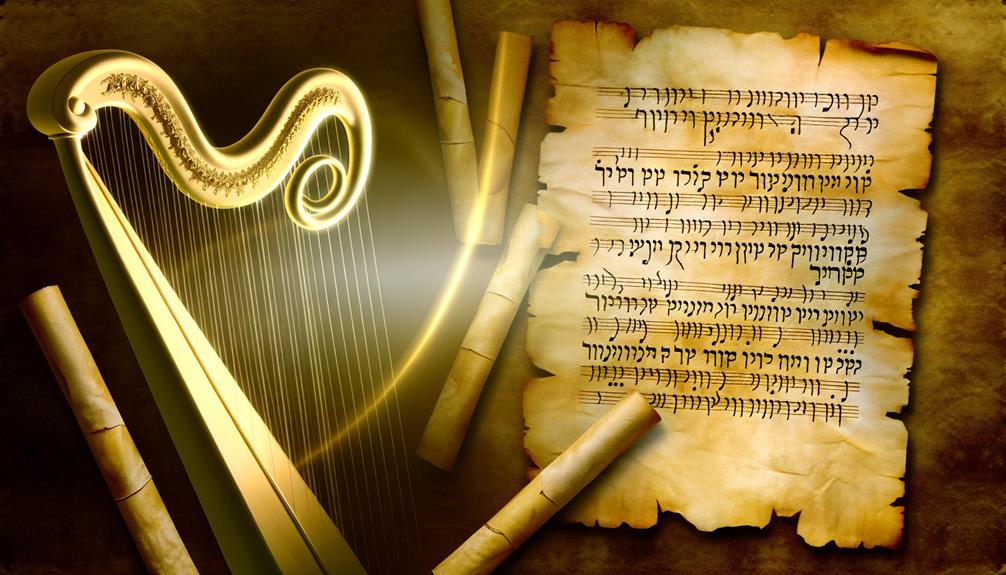
Understanding ‘Selah‘ within the context of prophetic literature naturally leads to its exploration as a musical notation, which sheds light on its functional role in ancient Hebrew worship practices.
Historically, ‘Selah’ appears in the Psalms, a collection of sacred songs integral to Israelite liturgy. The term is often interpreted as a directive for a musical interlude or a pause, allowing worshippers to reflect on the preceding verses. This interpretation aligns with the Psalms’ structure, where ‘Selah’ punctuates significant theological or emotional moments.
Furthermore, it may have served as an instruction to musicians, indicating a shift in melody or tempo. Consequently, ‘Selah’ underscores the intertwining of music and spirituality, enhancing the communal worship experience through deliberate contemplation.
Liturgical Instruction Theory
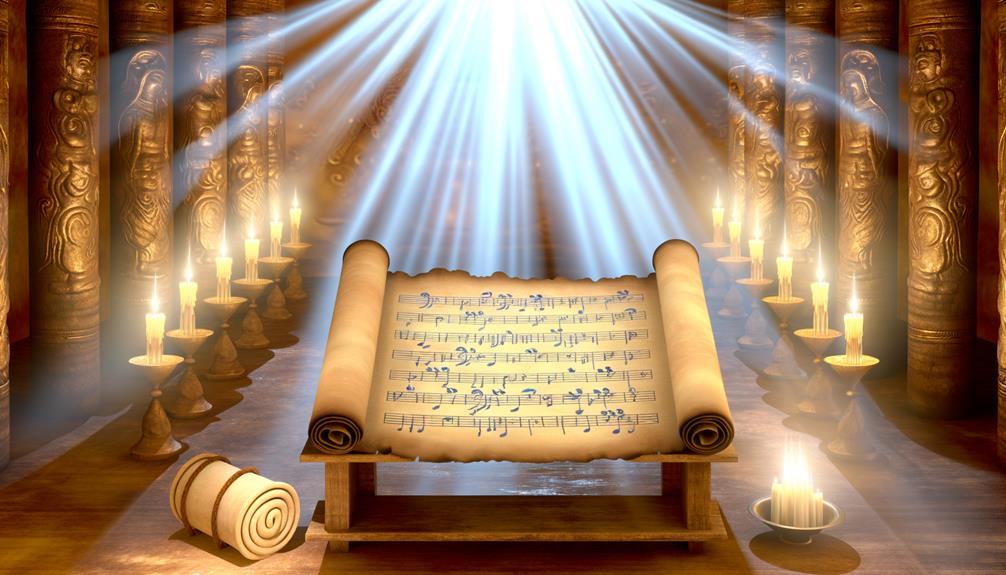
In the context of Liturgical Instruction Theory, the term ‘Selah‘ is often considered to indicate a purposeful musical pause, encouraging both the musicians and the congregation to reflect on the preceding message.
Historically, this pause would not only serve to enhance the worship experience but also provide a moment for theological contemplation and spiritual introspection.
This practice aligns with the ancient traditions of worship where moments of silence were integral to fostering a deeper connection with the divine.
Musical Pause Purpose
The interpretation of ‘Selah‘ as a musical pause within the Psalms aligns with the liturgical instruction theory, suggesting its function was to provide a moment of reflection or musical interlude during ancient Hebrew worship.
This perspective posits that ‘Selah’ served as a directive to musicians and worshippers, indicating a pause in vocalization allowing instrumental music to take precedence.
Historically, this aligns with the structure of Hebrew psalmody, which often incorporated musical elements to enhance the worship experience.
Theologically, such pauses might have offered congregants a deliberate space to ponder the preceding verses, deepening their spiritual engagement.
This liturgical practice underscores the integral role of music in ancient worship, blending theological reflection with auditory aesthetics.
Worship Reflection Moment
A profound aspect of the liturgical instruction theory is that ‘Selah’ provided worshippers with an intentional moment for reflection, ensuring that the weight of the preceding verses could resonate more deeply within the communal and individual spiritual experience. This reflective pause, rooted in ancient Judaic worship, allowed the faithful to internalize divine messages and prepare their hearts for subsequent verses. Historically, ‘Selah’ functioned as both a musical and spiritual interlude, bridging temporal expressions of faith with eternal truths.
| Aspect | Purpose | Impact |
|---|---|---|
| Liturgical Pause | Encourage reflection | Deepens spiritual engagement |
| Historical Context | Rooted in ancient Judaic worship | Connects modern worship to traditions |
| Theological Insight | Internalization of divine messages | Enhances personal and communal faith |
| Communal Practice | Shared moment of contemplation | Strengthens community bonds |
Pause and Reflect Theory

The ‘Pause and Reflect Theory‘ posits that ‘Selah’ serves as a directive for worshippers to momentarily halt and contemplate the preceding verses, enriching their spiritual engagement.
Historically, this interpretation aligns with ancient liturgical practices, where moments of silence were integral to worship.
Modern interpretations further suggest that this pause allows for a deeper, personal connection with the divine message conveyed in the Psalms.
Historical Context Analysis
Examining the term ‘Selah‘ within its historical context reveals that its frequent occurrence in the Psalms and Habakkuk suggests a deliberate pause for contemplation, underscoring its integral role in the ‘Pause and Reflect Theory.’
Historically, ‘Selah’ appears in texts that were likely recited or sung during worship, indicating its function as a musical or liturgical marker. This usage aligns with ancient Hebrew practices where pauses in recitation allowed for reflection on divine messages.
Theologically, it invites readers to meditate on the preceding verses, enhancing spiritual engagement.
Consequently, understanding ‘Selah’ within its historical milieu provides valuable insight into how early believers structured their worship and engaged with sacred texts, emphasizing a rhythm of reflection and reverence.
Liturgical Significance Explained
In the context of liturgy, ‘Selah’ functions as a pivotal element that encourages worshippers to pause and engage in reflective contemplation, thereby deepening the spiritual resonance of the recited or sung passages.
Historically, this term appears mainly in the Psalms and Habakkuk, where it serves as a cue for a musical interlude or a moment of silent meditation.
Theologically, ‘Selah’ invites believers to:
- Reflect on the divine messages contained within the scriptures.
- Contemplate the majesty and power of God.
- Internalize the lessons and moral teachings presented.
- Experience a moment of spiritual intermission, allowing for personal prayer.
This liturgical practice underscores the profound interplay between scripture, music, and worship.
Modern Interpretations Considered
Modern interpretations of ‘Selah’ often build upon its historical liturgical usage, suggesting that the term continues to serve as an essential prompt for worshippers to pause and reflect deeply on the spiritual and theological significance of the scripture being read or sung.
This theory posits that ‘Selah’ functions as a deliberate pause, inviting a moment of contemplation that allows the profundity of the preceding verses to resonate within the hearts and minds of the faithful.
By encouraging meditative reflection, modern scholars argue that ‘Selah’ helps bridge the ancient text with contemporary spiritual practice.
This interpretive approach underscores the timeless relevance of ‘Selah,’ affirming its role in fostering a deeper, more reflective engagement with biblical texts.
Linguistic Interpretations
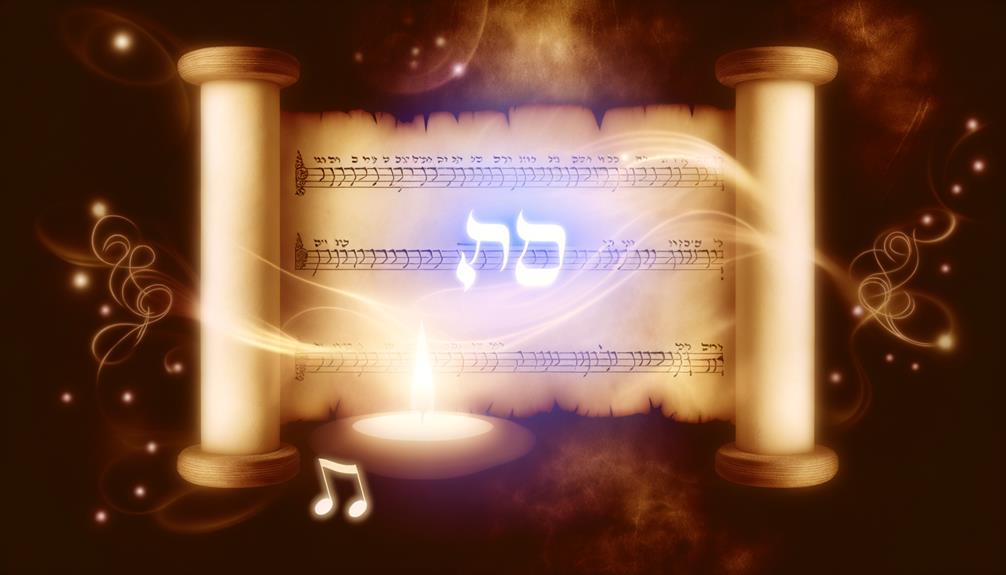
Scholars frequently analyze the term ‘Selah’ within the context of ancient Hebrew poetry, examining its potential functions and meanings through linguistic, historical, and theological lenses. Various interpretations have emerged, often rooted in the textual and cultural settings of the Psalms and other biblical passages where ‘Selah’ appears.
- Musical Direction: Some propose it indicates a musical pause or interlude.
- Liturgical Instruction: Others view it as a cue for congregational reflection or response.
- Emphasis Marker: ‘Selah’ might function to highlight or underscore key ideas or messages.
- Translation Challenge: Its precise meaning remains elusive, complicating translation efforts.
This multifaceted analysis enriches our understanding of ‘Selah’ and its role in biblical literature.
Significance in Modern Worship
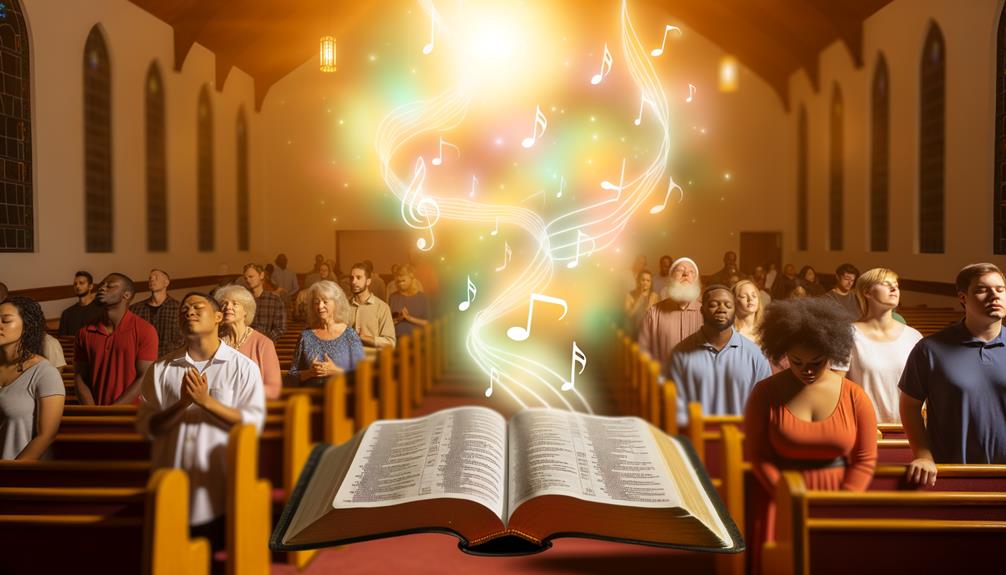
Building upon these varied interpretations, the term ‘Selah‘ continues to resonate within contemporary worship practices, where it often serves as a moment for reflection and spiritual pause amidst the liturgy.
Historically, ‘Selah’ in the Psalms may have indicated a pause for contemplation or a musical interlude, with its exact function debated.
In modern worship, this ancient term is revitalized as a cue for congregants to meditate on the preceding message or lyrics, fostering deeper spiritual engagement.
Theologically, incorporating ‘Selah’ underscores the importance of intentional reflection in worship, emphasizing a rhythm of reverence and attentiveness.
Hence, ‘Selah’ bridges historical scriptural traditions with present-day practices, enriching the worship experience through purposeful pauses for divine connection.
Conclusion
Like a timeless river carving its path through ancient landscapes, the word ‘Selah‘ flows seamlessly through the Psalms and Habakkuk, carrying with it the weight of musical, liturgical, and contemplative significance.
Whether a call to musical interlude, a liturgical directive, or an invitation to pause and reflect, ‘Selah’ enriches biblical texts with layers of meaning.
Its enduring presence in modern worship underscores a sacred rhythm, inviting deeper meditation and connection with the divine narrative.




